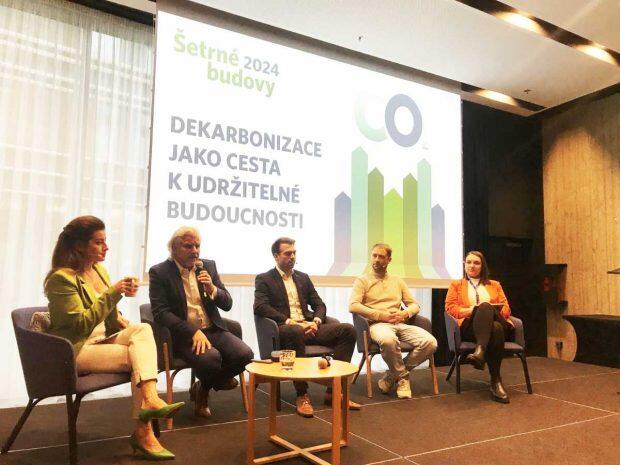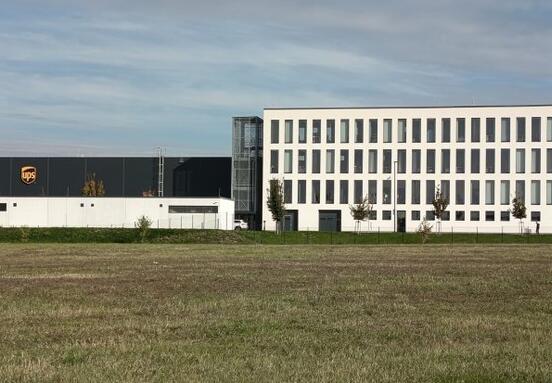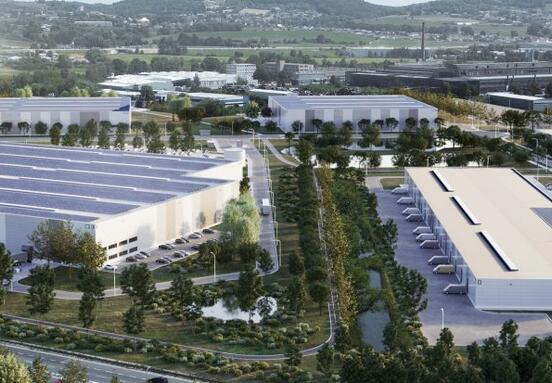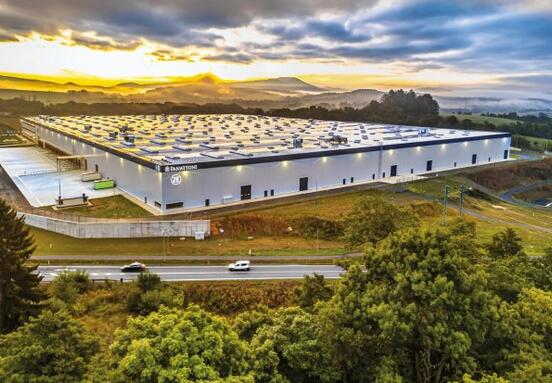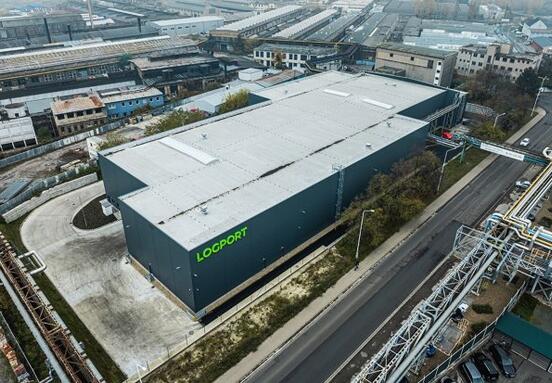The common denominator of the meeting was the presentation of solutions and technologies that significantly reduce energy consumption and the carbon footprint arising from the construction and use of buildings, including large-scale industrial facilities. The efforts of investors, builders, architects, developers and other interested parties in this area are gaining intensity in connection with the broad context of the tightening directives of the European Union on the transformation to a carbon-free economy in 2050.
As Nathalie Marková, head of the energy management department of the Department of Energy Efficiency and Savings of the Ministry of Industry and Trade of the Czech Republic, reminded at the Prague conference, next week the members of the European Parliament will discuss the revised directive on the energy efficiency of buildings. Its goal is the so-called emission-free building fund in 2050 (within the entire European Union).
For example, a legislative obligation to renovate older buildings in the non-residential sector and other measures can be expected in the near future. These should be clearly summarized in a document that is currently being prepared for the needs of companies by the Green Building Council (CZGBC).
Experience from abroad
The morning program of the conference was opened by the chairman of the board of CZGBC Iveta Králová. The architect Vicente Guallard (he is the director of the company Urbanitree, where he designed a number of ecological buildings) then presented, among other things, the concept of how to transform cities into biocities.
Among others, Petr Palička, managing director of Penta Real Estate, spoke on the topic of sustainable development; Eva Nikodymová, health&safety and environmental manager Skanska; John Hale, group board director of the Chapman Taylor studio and Petr Hlaváček, deputy mayor of Prague, member of the City Council. City of Prague for the area of territorial and strategic development.
Event partners
Ana Cunha, strategic sustainability advisor & CSR director at engineering and consulting company Deerns Group, summarized the evolutionary concepts of sustainability illustrated by trendy buildings. Pascal Eveillard, sustainable business development director at Saint-Gobain Group, discussed how to implement low-carbon and circular solutions in the construction of not only industrial buildings; Karel Fronk, ESG manager at KKCG Real Estate Group, Tomáš Hýrek, business development manager at Stora Enso Wood Products Zdirec and Pavlína Kulhánková, director of the department of industrial ecology at the Ministry of Industry and Trade.
Concrete examples from practice
At the beginning of the afternoon program, Michal Petřík, CEO of Buildsys, emphasized that significant reductions in energy and operating costs can be achieved by the correct use of already installed technologies, and thus without major investments. "People in operation and maintenance are 90 percent limited by the budget, they are often used to 'their' established procedures, which may be outdated," pointed out Michal Petřík.
According to him, the role of the chief technologist, whose competence should be to coordinate and manage all the necessary processes and technical solutions, is a position that is sometimes unnecessarily neglected. Automated systems generating the necessary data to permanently optimize building operations should help with this. Of course, this is only the beginning, the technology and equipment of buildings can also be innovated. Buildsys also offers its solutions for logistics and industrial complexes.
How to decarbonize a commercial building using heating and cooling technology was demonstrated at the conference by Petr Hejduk, Daikin's commercial sales manager. For the building dating back to the 1970s and with a floor area of 20,000 square meters, Daikin experts, in cooperation with the University Center for Energy Efficient Buildings (ČVUT UCEEB), designed three variants of solutions, in which the use of heat pumps and other modern technologies plays a leading role. All options bring energy savings in the order of tens of percent, the most economical up to 50%.
Marek Petrik from Velux presents the Living Space project.
The sustainable construction of the future in the residential sector was then presented by Marek Petrik, architect of Velux. This is a set of seven extremely energy-efficient Living Space wooden buildings in Copenhagen. At the same time, the Effekt architects studio, closely cooperating with Velux on this project, will also use the partial solutions and principles used on other occasions. By the way, the know-how of the Living Space project will be offered by the Danish government as part of its assistance in the reconstruction of Ukraine.
Banks will also consider the "greenness" of buildings
In the next part of the program, the editorial staff of Logistics Systems was interested, for example, in the presentation of Alice Machová, leading partner of consultancy in the field of CFO agenda and sustainable development at EY Czech Republic and Blanka Beranová, executive director for sustainability at ČSOB. Their information showed that companies respecting the principles of sustainability in construction and development should receive, for example, more favorable financing conditions.
The conference was held at the Stages hotel in Prague.
Andrew Waugh, founding director of the Waugh Thistleton Architects studio, who is dedicated to researching the possibilities and limits of wooden construction and its influence on the forest and the city, also described his concrete solutions at the conference. Main
